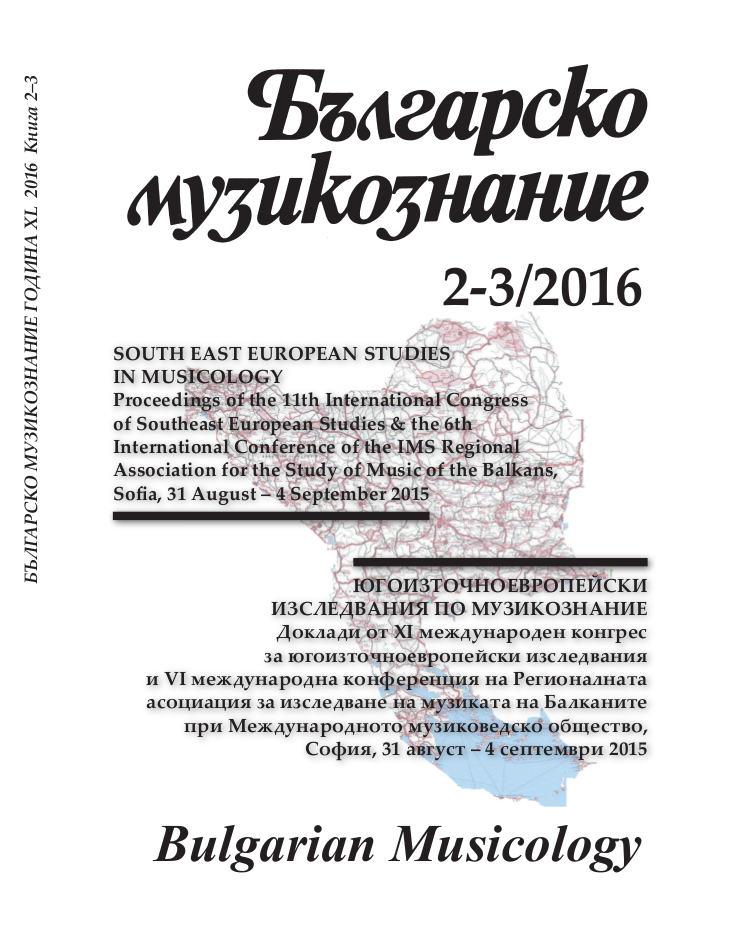
We kindly inform you that, as long as the subject affiliation of our 300.000+ articles is in progress, you might get unsufficient or no results on your third level or second level search. In this case, please broaden your search criteria.

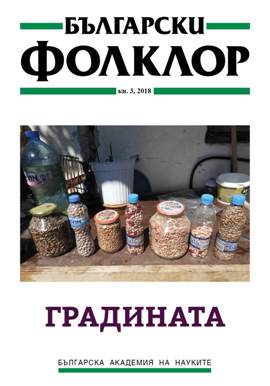

A chapter from Alain Badiou’s dialogic book (with Nicolas Truong) on the condition of theatre today, its merging borders with other arts and media and its challenged perspectives tomorrow. This philosophic pamphlet is based on a public talk given by the famous philosopher at the Avignon Theatre Festival. Translated in Bulagrian by prof. Lidia Denkova.
More...
Philosophical commentary on Alain Badiou’s dialogic theatre pamphlet and his broader personal engagement with theatre and cinema.
More...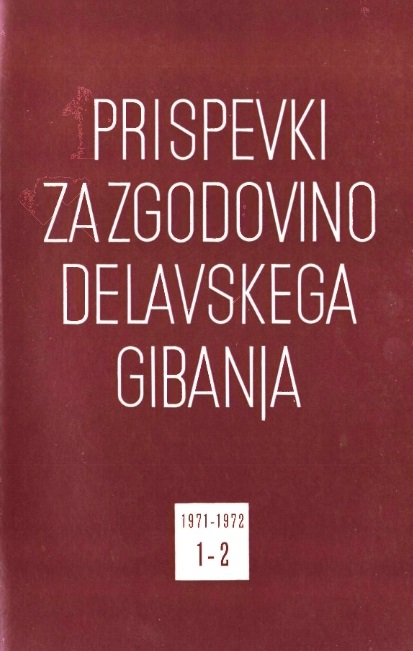
The treatise is based on some of the chapters from the author's book »The History of Slovene Literature«, volume 7, and describes the relationship between the National War of Liberation and cultural tradition. The author believes that the new culture isi the heritage of all that was beautiful and great in our cultural past. The relationship between the National Liberation Movement and the Slovene cultural past in summed up, especially the strengthening of cultural tradition during the War of Liberation — e. g. the growth of popular songs of the Liberation Movement and War from songs sung before the war. Partisans and activists chose their names (Iztok, Matjaž, Peter Klepec, Črtomir) from the works of cultural classics. Five partisan brigades and some undergraund presses were named after Slovene classic writers; on the anniversaries of their births and deaths, brochures, song-books and anthologies of Gregorčič, Jurčič and Cankar were published. The highest respect was paid to Prešeren. The anniversaries of his birth and death were celebrated in the whole of Slovenia' and the presidium of SNOS (Slovene National Liberation Council) proclaimed the day of his death a Slovene cultural holiday. The second part of the treatise demonstrates by examples how, during the National War of Liberation, folk songs were given new or partly changed texts and melodies, without losing the characteristics of folk songs. The treatise also presents songs which grew from the revolutionary feelings of the Party workers and symphatizers of the revolutionary movement and were sung even before the war.
More...
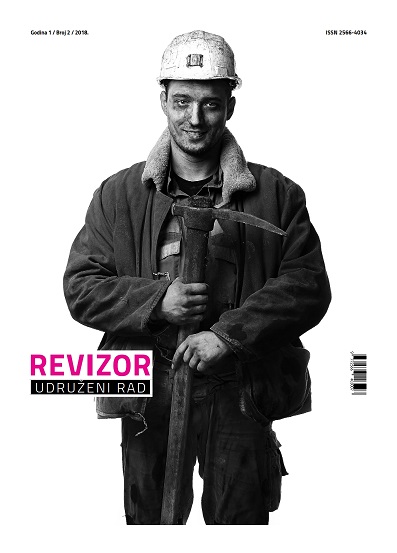
Pojavio se 2005. godine na talasima gradskog Radija Kameleon, kao emisija koju je uređivala i vodila DJ Mayra. Tu je trajao i živio nekoliko godina, da bi 2008. godine evoluirao u klub, tj. caffe bar. Do dana današnjeg, Urban BeaTZ je ostao mjesto na kojem se sreću i susreću umjetnost i nauka, mladost i iskustvo, inkubator pozitivne i kreativne energije, mjesto koje ne zaobilaze neka od najznačajnijih bosanskohercegovačkih, pa i svjetskih umjetnika i kulturnih radnika. [...]
More...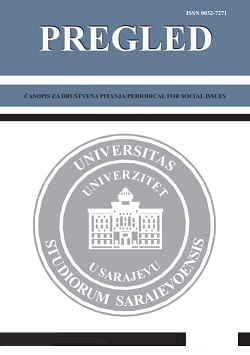
This paper explains subcultures using the category of lifestyles. Subcultures are defined as alternative modes of life opposed to the dominant (governing) cultural pattern. The author‟s attention is transferred from the objects to the ways in which they are symbolically represented, in turn used by a subcultureto shape its styledefinitely. Subcultural styles abound in various meanings, which in sociology are not understood as given, but as produced. Analogously, subcultural identities in the era of globalization of the society are also not treated as something imposed, but as a matter of personal choice – that which is created in the reflexive activities of an individual. Starting from the opinion that a subcultural style represents a form of symbolic resistance, the author presents a palette of different principles of the classification ofsubcultures. He examines violent (war) and peaceful (pacifist) subcultures, while particular attention is paid to the subculture of jeans and popular music trends, such as dance, techno, rave or house. Former Teddy Boys, rockers and punk rockers have made way for clubbers and members of the so-called urban tribes, while the “resistance through rituals” has diminished before the advancing young hedonists preoccupied with dance and fun. The concluding remarks in this paper are reserved for the consideration of the prospects of subcultural activities of the young, which are taking place in the domain of new urban movements (environmental, feminist and other).
More...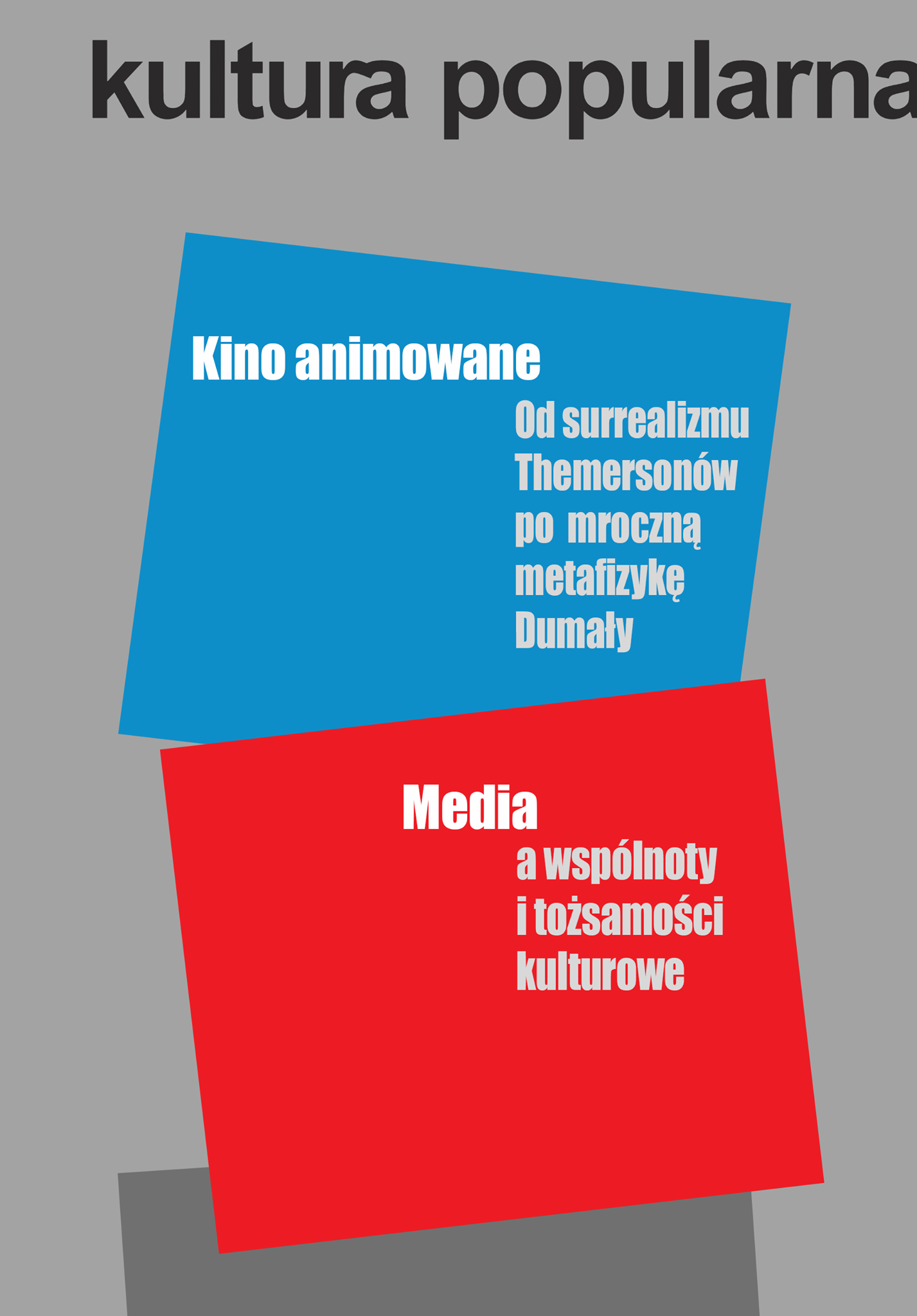
The aim of the article is to point out that popular culture, in the framework of which popular song contests function, although associated with the practices, needs, experiences and traditions of ordinary people, is a form of the game of power and that the shape and the character of the Intervision Song Contest were influenced by the Polish United Workers' Party. The course of the Cold War was also meaningful for its organization. The analysis of two opening credits of the Intervision Song Contests of 1977 and 1979, partially animated, allows to show that the festival was planned thoroughly and was assessed by the party which used it for the propaganda. The post-colonial perspective appears to be proper for the analyses, although the term is ambiguous and explained by numerous opinions which exclude each other. However, it enables to deconstruct and expose the models of colonial thinking and acting, demonstrating that, despite the organizers’ declarations of political neutrality, the festival was both an artistic and political initiative.
More...
Play and music make up the phenomenon of human expression known as dance. The performance of Serbian dances by populations from Montenegro, Herzegovina, Bosanska Krajina, Dalmatinska Zagora, Lika, Kordun and Banija (hereafter referred to as Dinarics) who had been brought to live in Vojvodina in the 20th century occurs in a completely different context and in new situations. This led to a new kind of analytical approach to dance, one focused on viewing dance in a new geographical contextual framework – in Vojvodina, at certain times and opportunities for dancing such as festivals, concerts, weddings etc. By analyzing the opposition between remembering and forgetting, Gordana Đerić arrived at the conclusion that the collective intimacy became manifest and public over the course of the dissolution of the former Yugoslavia, and that it mostly wasn't the case of the inadvertent or reckless airing of separate national intimacies, but of a planned reduction, media filtration, promotion and utilization of certain commonplace terms of mutual qualification, which were built on opposition to Others or the alleged vulnerability or defense from Others (Đerić, 2008: 10-11). The aim of the paper is to show why and in what ways the collective intimacy of Dinarics became manifest and public through the dance practices of certain individuals.
More...
This paper presents an anthropological review of the two concerts of sevdalinka songs that were held at the Sava Center in Belgrade, in November of 2010 and 2011. First, sevdalinka is placed in the context of the Yugoslav cultural heritage, and then, using the analysis of these two concerts, the attempt is to show that from a purely musical “genre” it can become the mean of “overcoming the past” – referring to the last ethnic conflict in the former Yugoslavia.
More...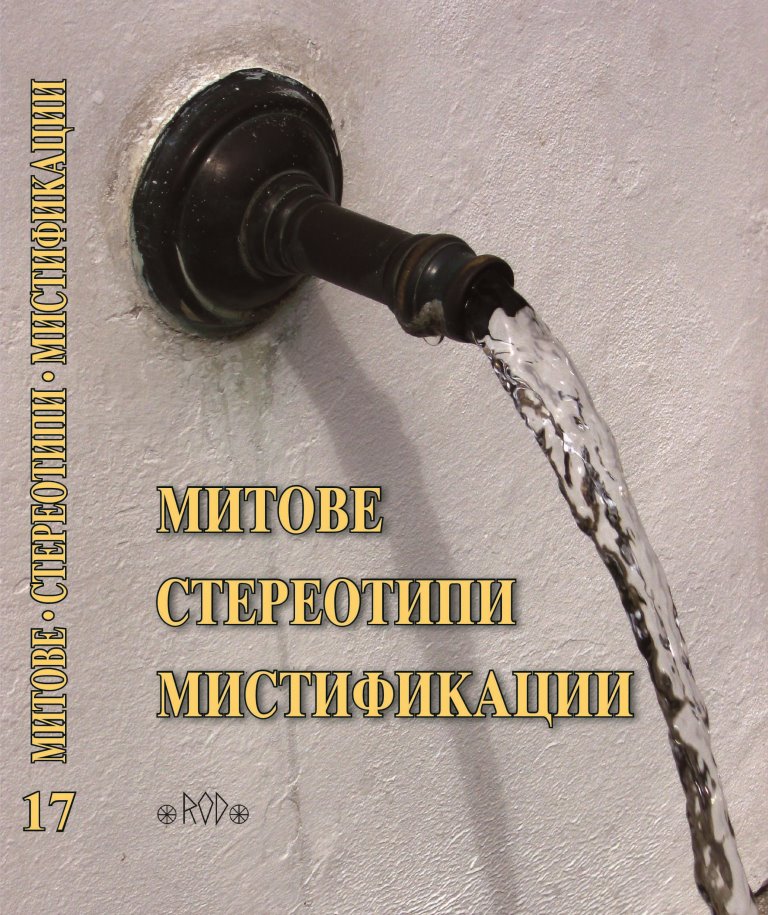
Until recently, the definition of music folklore included “oral/aural” as a central category for distribution and reception of folk music artefacts. The recording era facilitated the distribution of the song and dance music to a much wider audience while eliminating the need for physical presence of the performers. The digitization of music folklore has had further consequences both in musical and non-musical aspects. On the other hand, the contemporary presentation of the Macedonian musical folklore started with the radio broadcast in the first half of the 20th century, continued with the television in the second half of the 20th century, and since the beginning of the 21st century mostly transferred on the internet. All of the media and stage performances inevitably included transformed repertoire, and modern appliances for sound amplification and recording which led to preservation and a vast quantity of archived music material. Overall, the elaboration of the researched material explicitly proofed an existence of a large number of musical elements inherited from the traditional forms, but also their transformation, or more likely adaptation in the contemporary environment. Therefore, the contemporary means for transfer of the Macedonian music folklore are in continuity with the tradition, regardless of the significant changes that happened in the regional music culture in the meantime.
More...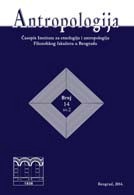
Since the 1980’s ethnology and social and cultural anthropology have witnessed an increasing number of studies and debates on nationalism in the light of popular culture. In the light of theory formulated by Hobsbawm, Gellner, Hayes and Comaroff, nationalism in effect are not big symbols and official politics, but rather popular entertainment, media and normal practices of ordinary people in everyday life. Traditional primordial concepts of nationalism are deeply regressive. In this paper, I discuss a few contradictions in the relationship between tradition, nationalism and music. An excellent example illustrating specific nature of these contradictions is Dragačevski Sabor Trubaca (Guca Trumpet Festival) in Guca, Serbia and particular music genre – brass music. In my opinion there are three distinctive discourses/narrations about history and meaning this festival and specific kind of music: dominating Serbian discourse, "weak" Gypsy discourse, and researcher’s discourse. This study is effect an ethnographic fieldwork conducted in 2010 by an author and large group of students from Institute of Ethnology and Cultural Anthropology UAM Poznań, Poland.
More...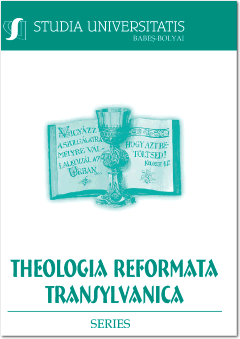
This study present Béla Árokháty’s biography, who was not only a musician but also a minister leading and inspiriting his flock. It also highlights that the people rebelled against him because of the novelties he adopted. Béla Árokháty was convinced that the Protestant musical treasure must become accessible to all. In several of his writings, he accepted the rules regarding religious church music and instrumentation, but from the beginning of his religious musicological activity and, until the last, his aim was to favour the widespread adoption of church music in the Reformed Protestant service. Very few of his contemporaries recognized his personality and mission, however he was the one who launched the reform of the musical culture in the Protestant communities of the 20th century. Béla Árokháty’s exceptional initiatives and his achievements have largely contributed to raising Hungarian Reformed religious music to European standards.
More...
The main churches in Hajdúböszörmény, both of remarkable size inherit two Angster-organs with 3 manuals. The older and bigger organ in the church of Bocskai Square was built 1902 with three manuals and 46 stops. All divisions are constructed with different windchests by using tubular pneumatic action: the great and pedal with cone chest, the second manual with Witzig-type pneumatic windchest and the third manual using the Angster-type pneumatic windchest. This is indeed a unique solution by Angster, later one he never used the Witzig-systhem again, for pneumatic windchests he used the Angster-type pneumatic construction. The organ in the Kálvin Square church was originally built 1899, with slider chests, tracker action and barker lever, pneumatic action for the stops. Angster rebuilt it in 1914, the organ received new Angster-type pneumatic windchests and a new console with roll-player mechanism with three manuals and 38 stops. After several modifications, the organ was reconstructed to its original state in 2014–2016 as the first pneumatic-reconstruction project in Hungary. The Bocskai Square organ is after improper reparations still unplayable, the congregation launched benefit concerts by professionals in November 2018 to gain bigger public attention to this organ-treasure.
More...
Several Hungarian-speaking Transylvanian Lutheran congregations of the 20th century have sung Gregorian passions together with a number of liturgical songs belonging to the Holy Week (such as Kyrie puerorum, Lamentatio Mariae). The Lutheran congregation in Oltszakadát is the only Lutheran congregation in Transylvania, that owns an exemplar of the so-called Öreg Graduál, the Protestant book of devotion that includes these items. The handwritten notes in the Gradual from Oltszakadát, as well as the corrections done by hand in the case of worn-out pages that contained often-sung liturgical hymns, all emphasize the fact of the Gradual’s actual regular use. The congregation in Oltszakadát kept till this day the specific singing practice of Puer natus set in the old hymnals and graduals. The local Hungarian version of the medieval cantio starting with the words Puer natus in Betlehem in hoc novo anno, is sung by the congregation on Christmas Eve’s service, and is repeated in the tower-song subsequent to the church service. The local Hungarian version, starting with Gyermek születék Betlemben ez új esztendőben is actually a variant of the cantio with the same name present in the Gradual from Eperjes (Eperjesi Graduál). The practice of Puer natus singing is still alive in Transylvanian Saxon-Lutheran congregations, and some congregations have recently readopted it. Whether it be due to the Saxon influence or the close relationship to the Gradual from Eperjes, the congregants from Oltszakadát sing the song in simple polyphony.
More...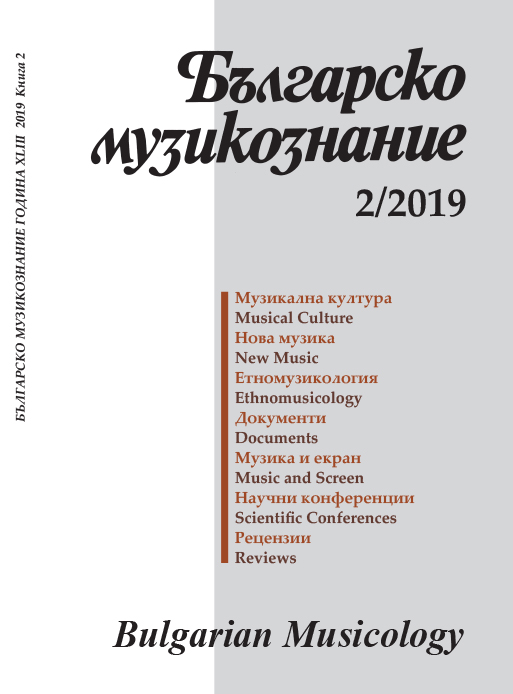
The paper presents a particular stage in a more extensive study seeking to elucidate national amateur music and art-related activities with reference to folklore as a social field (according to Bourdieu). The period under consideration is between 1954, when the Peoples’ Art Central House (PACH) was established, and 1960, when the earliest folk fairs were held to mark a new stage in the relationship between folklore and amateur art activities. The article seeks to outline the relations surfacing at that time between the wider social field of amateur music making and various subfields of professional music activities: 1. Interactions with composers (forming a group of ‘composers for the amateur activities’ arising from the need to develop repertoires and help amateur composers); 2. Interactions with professional performers (as a result of requirements to constantly improve the performance: patronage of amateur groups by professional ones; amateur groups led by young professional conductors; paid professional performers joining amateur groups); 3. Interactions with professional performers and musicologists in the area of training (PACH’s unclear strategy for coaching activities is traced using the Centre’s didactic publications in its journal, namely Amateur Art Activities, and so is the information about the seminars and courses). The relationship between these two social fields in the period was beneficial to the professional realm, which at the time was also in a phase of constituting, establishing and legitimating composers (in parallel with the Union of Bulgarian Composers), providing conductors with professional experience so that they could serve as a vehicle for professionalizing amateur groups and including them into the expanding network of professional institutions, opening up opportunities for the realization of professional musicians (conductors, performers and musicologists) as educators who could train amateurs at all levels, and not least, draw educated audiences to professional groups and performers.
More...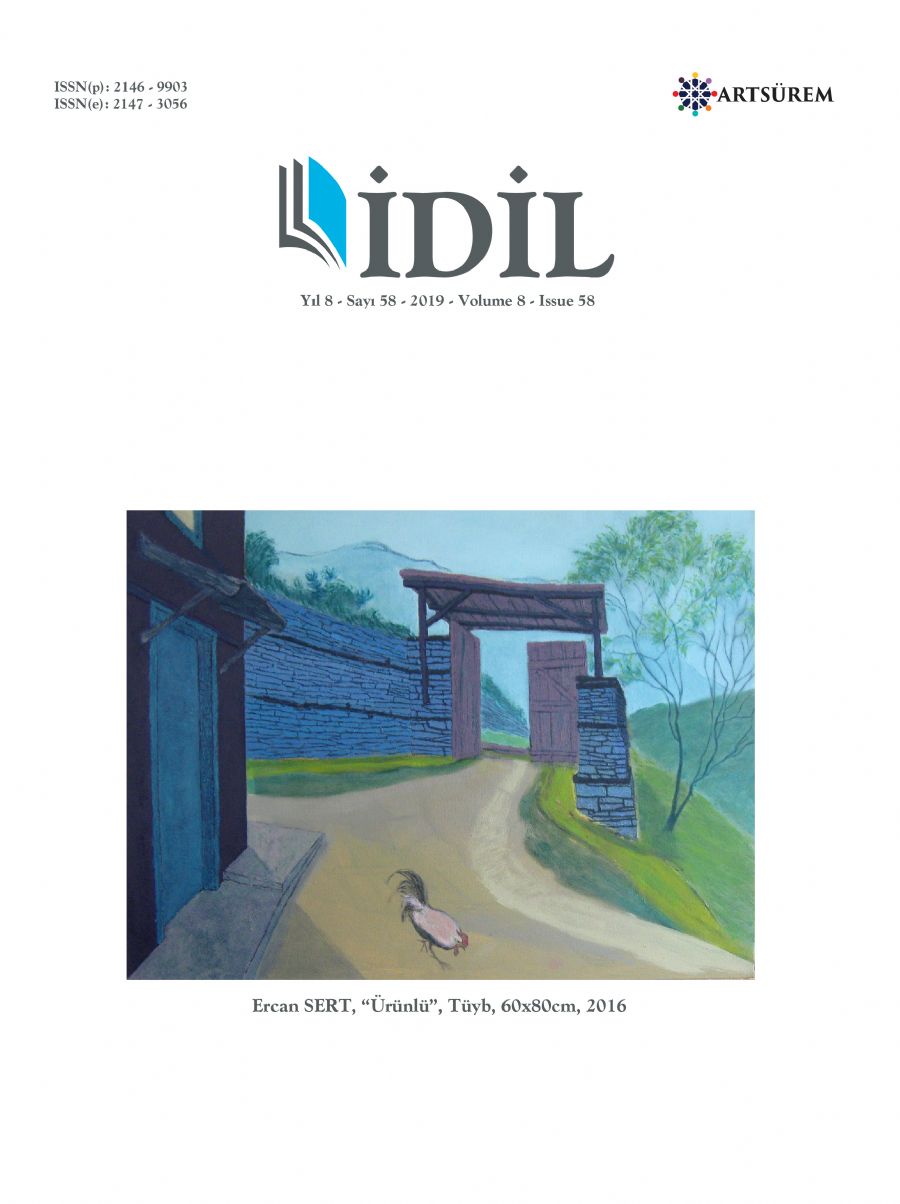
The Ottoman Empire, which ruled over a wide geography for centuries, had many civilizations within it. As a result of the wars in different countries, the political, military and cultural interactions have become inevitable, and music has taken part in these cultural interactions. In this study, the effects of the Westernization movements in the music starting from the Ottoman Empire with the historical analysis method were discussed. Turkish music was forbidden after the speeches made in Following the speeches which were made in 1926 at the Sarayburnu Casino, Turkish music was marginalized, and Turkish music was broadcasted on radio in 1934-1936. Ottoman music was called reactionary by the official ideology of the Republican period and some broadcasting institutions of that period. At the peak of the alaturka-alafranga debate in the country, Ziya Gökalp's idea that folk music is the folk song in the villages of Anatolia in the national culture, and the idea that these folk melodies can be processed with Western techniques has become a dominant ideology. Despite all these prohibitions, there action of the lower levels of society was to internalize Turkish music in contrast to the expectations. The practices in this context were abandoned and the ban on Turkish music was abolished in 1936.
More...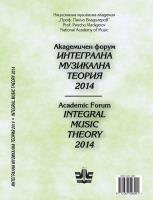
This paper presents a small portion of ongoing research addressing the sacred celebrations and chanting practices in Slavia Orthodoxa from the 11th to 13th centuries. The focus is on the instructions for musical performance as prescribed by the rubrics in extant copies of service books. The investigation focuses specifically on a description of the singing at table during the August 15 Feast of the Dormition of the Theotokos, as recorded in a 12th-century copy of the Studite Typikon, the rule in use at the Kiev Monastery of the Caves, during the time of its founder, Theodosius. It is an early account describing in detail the musical performance of the festive hymnody outside the Divine services. An excision and abstraction of the chanted numbers from their liturgical context this early in Slavic ecclesiastical history hints at a primal developmental stage of such paraliturgical, and distinctly Slavic, musical-devotional forms as the Kolyadi and the later Spiritual Verses. The musical settings are then located in contemporaneous musical manuscripts, and are presented and examined within the context of the occasion. The paper concludes with a reconstruction of one of the chants for the Dormition feast.
More...
The study is focused on the dynamic processes taking place in the Orthodox singing practice over the 16th and the mid 17th c. That was the time when znamenniy raspev co-existed alongside with its later monophonic variants, as well as the Old Russian polyphony. In modern medievalism this sum of chants is expressed by the collective term mnogorazpevnost (multi-voice chanting). The term scale does not exist in Old Russian theory. The formation of the scale notion is related to the understanding of the tone as a separate unit. A brief historical overview is presented, based on the periods concerning the formation of the notion of point, respectively, of a music straight line. The short-range melody is closely connected with the Russian understanding of a musical system consisting of four identical trichords (soglasie). The study includes a tessitura-timbre argumentation for the formation of the notion of scale. This clarification supports the idea of the ascetic nature of this type of singing. Singers’ interchangeability when singing any of the parts in the multi-voice chants is related to the conceptual understanding of singing as an act of obedience. Despite the fact that the term obihodny zvukoryad (obihodny scale) was established in the 17th c., Western European theorists make interpretations based on negative comparison. Scale is at the same time viewed as trichord (soglasie), tetrachord and hexachord.
More...